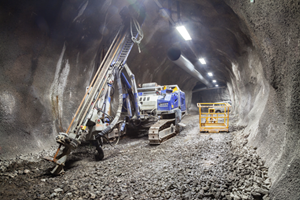 |
| © istock.com/aeduard |
In a March 27, 2017, Federal Register notice, MSHA proposed to delay the effective date of its Workplace Examination final rule for surface and underground metal/nonmetal (MNM) mines from May 23 until July 24, 2017. The delay was triggered largely by the Trump Administration’s January 20 order directing a “regulatory freeze pending review” to “ensure that the President's appointees or designees have the opportunity to review any new or pending regulations.”
Another factor is litigation filed against MSHA by the National Mining Association, National Stone, Sand & Gravel Association, and the Portland Cement Association in a petition filed in the U.S. Court of Appeals, 11 Circuit, on March 17, 2017.
During rulemaking, MSHA was criticized for not quantifying monetary benefits supporting the rule and for lacking data to document the injuries and fatal incidents the modified rule would prevent. MSHA estimated the economic impact to be $34.5 million per year across all MNM mining operations, including contractors. Although the agency is not required to use monetized benefits under the Mine Act to support standards, the agency said it anticipates benefits in reducing variability in how operators can conduct examinations under current law.
In its March notice, MSHA says it realizes mine operators may need more time to develop additional recordkeeping capacity and to alter business practices to conform with the additional requirements. Also, it will consider comments suggesting a further extension of the effective date. The agency will develop new guidance, training and other compliance assistance materials.
Requirements Under the New Rule
The contentious final rule expands the current workplace examination requirements codified at 30 CFR 56/57.18002 in significant ways. It requires:
- examinations be conducted before miners begin work in a working place for the shift (the current rule requires examinations each shift, but they can be conducted at any time during that period, rather than prior to work commencing in an area);
- examinations to be documented in terms of what hazards are identified, and what corrective actions were taken and when (the current rule only requires a record to identify the date/shift, area examined, and name of the examiner; both versions require records to be maintained for 12 months);
- that the examination records be made available to MSHA’s authorized representatives and to miners’ representatives (the current rule does not give miners’ representatives the right to review and copy the reports);
- the competent person performing the examination to promptly notify miners in affected areas of any conditions found that may adversely affect safety or health (this expands the current requirement to promptly initiate appropriate corrective action).
Many mine operators already consider it a best practice to document hazards identified as part of a robust workplace examination program and go beyond the existing minimum requirements. From an OSH practitioner’s perspective, it is hard to deny that detailing problems discovered during an examination will facilitate taking corrective action and notifying miners of problems.
Critics Warn of Increased Liability
However, the rule’s opponents are concerned that mandating such disclosure will lead to heightened MSHA liability because the Mine Act is a strict liability law with no statute of limitations. Therefore, even when identified hazards are long-corrected, making their documentation mandatory and requiring records to be produced and evaluated by the agency for a full year allows MSHA to issue citations based solely on the examination reports. For problems left unabated for any period, negligence could be heightened and personal liability under Section 110(c) of the Mine Act could be imposed against the examiner in some circumstances, even if conditions are safe at the time of the subsequent MSHA visit.
By comparison, OSHA can only issue citations for violations that occurred within the preceding 6 months, and a safe harbor exists for most self-audits, under which OSHA will not issue citations as long as the identified hazardous conditions were abated in a timely manner prior to the OSHA inspection. A similar policy enacted by MSHA might go a long way toward dissolving opposition to its new workplace examination rule.
The comment deadline on the proposed extension is April 26, 2017. Comments may be submitted through the federal eRulemaking portal. Be sure to reference RIN 1219–AB87 or Docket No. MSHA–2014–0030.
Originally published April 10, 2017.